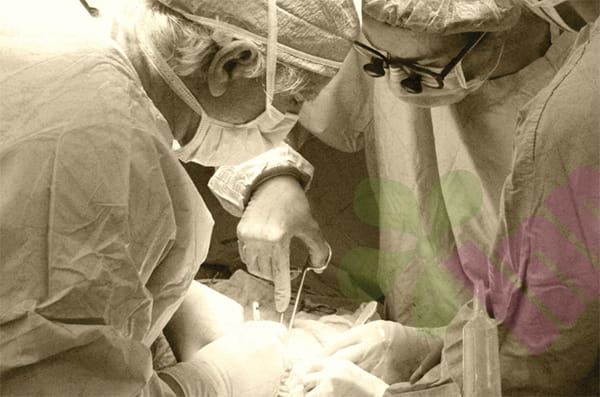Many people find that their lower body (buttocks, thighs, calves) is abnormally large and disproportionate to the upper body. Even with a strict diet and exercise, this part of fat is stubborn and often accompanied by pain and easy bruising. This is most likely not simply obesity, but a chronic disease called Lipedema. It mainly affects women and often appears or worsens during periods of hormonal fluctuations such as puberty, pregnancy, or menopause. It has a clear family genetic tendency.

Lipoedema Signs and Symptoms:
Lipedema is a rare fatty tissue disorder that primarily affects women. Unlike lymphedema, as the disease progresses, it eventually affects the venous and lymphatic systems (venous lipedema or lympholipedema or both). The underlying problem with lipedema is the abnormal distribution and structure of subcutaneous fatty tissue. This abnormal fat accumulates primarily in the legs (usually symmetrically) and sometimes in the arms, while the trunk, hands, and feet are usually not affected or are only mildly affected. Typical manifestations include:
- Disproportionate fat accumulation in the lower body: The buttocks, thighs, and calves are significantly enlarged, forming a sharp contrast with the relatively slender waist and upper body.
- Pain and tenderness: The affected area often has spontaneous pain, tenderness, or abnormal sensation (such as tightness, distension), and touch or slight pressure can cause obvious discomfort.
- Easy to bruise: The skin is very fragile and can easily get large bruises from even the slightest bump.
- Changes in tissue texture: The subcutaneous tissue feels peculiar, similar to the nodular feel of "pebbles" or "bean bags".
- Resistance to conventional weight loss methods: Whether dieting or exercising, it is difficult to reduce the volume of fat in abnormal accumulation areas.
- Increased edema: Especially when standing or sitting for a long time, in hot weather, or during menstruation, the swelling of the lower limbs will increase. As the course of the disease progresses, the lymphatic system may be overloaded and develop into lipolymphedema.
Why is it often misdiagnosed or ignored?
Lipedema is often mistaken for simple obesity, lymphedema, or venous insufficiency, mainly because many doctors lack understanding of it.
In addition, edema may not be obvious in the early stage, and it is easy to be confused with lymphedema in the later stage. The diagnosis mainly relies on a detailed medical history and professional physical examination (such as negative Stemmer's sign, that is, the skin on the dorsum of the foot can be lifted, which is different from lymphedema). Ultrasound, MRI, etc., can assist in evaluating fat distribution and excluding other diseases, but they are not the basis for diagnosis.
Lipoedema Management:
Currently, lipedema cannot be completely cured, but systematic management can effectively control symptoms, relieve pain, delay progression, improve appearance and function, and enhance quality of life. Treatment requires multidisciplinary collaboration (vascular department, lymphatic department, dermatology department, nutrition department, physical therapist, psychologist, etc.), and emphasizes individualized solutions:
For example, gentle massage techniques performed by a professional therapist are designed to promote relatively healthy lymphatic return and reduce tissue fluid retention and discomfort. They should be performed regularly. They provide gentle, continuous pressure to counteract the increase of daytime edema and to shape the limbs. They are usually used at the beginning of treatment or when edema is obvious. Gentle water exercise (such as swimming, water gymnastics) or land exercise (such as walking, riding a stationary bicycle) under pressure. Exercise helps improve circulation, lymphatic function, and muscle tone, and the buoyancy of water can reduce the burden on joints. Avoid high-intensity impact exercises. Keep the skin clean and moisturized to prevent dryness, itching, and secondary infection. Avoid trauma. After the swelling is controlled and stabilized, tailored medical elastic stockings or elastic pants (usually plain knit and high compression level) should be worn long-term (daily during the day). This is key to maintaining the treatment effect and preventing the edema from returning. Although abnormal fat cannot be eliminated, maintaining a healthy weight is crucial. Excess weight can significantly increase the symptoms of lipedema and the burden on the lymphatic system. It is recommended to adopt a balanced, anti-inflammatory diet pattern under the guidance of a nutritionist and avoid extreme dieting.
Important reminder:
Avoid ineffective or harmful methods: Traditional weight loss surgery (such as gastrectomy) is ineffective for abnormal fat. Diuretics are not only ineffective but also harmful. Strict restriction of fluid intake has no scientific basis. The earlier the diagnosis and standardized management, the more effectively the symptoms can be controlled and the progression of the disease to lipolymphedema can be delayed. Lipoedema is a chronic disease that requires patients to adhere to pressure therapy, moderate exercise, weight management, and skin care throughout their lives.
Although lipedema is troublesome, symptoms and quality of life can be significantly improved through scientific understanding, the help of a professional medical team, and active self-management by patients. The key is to seek the right diagnosis and persevere in implementing a comprehensive treatment plan. For more information on Innomed®Elastic Bandage Self-Adhesive, refer to the Previous Articles. If you have customized needs, you are welcome to contact us; You Wholeheartedly. At longterm medical, we transform this data by Innovating and Developing Products that Make Life easier for those who need loving care.
Editor: kiki Jia

 English
English عربى
عربى Español
Español русский
русский 中文简体
中文简体








